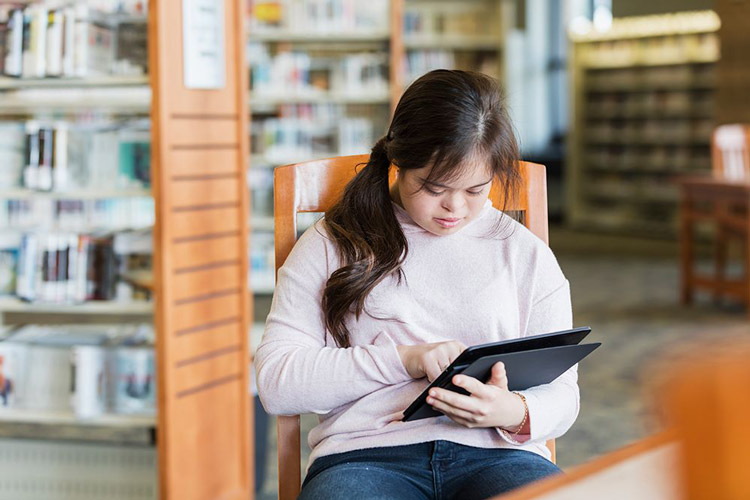Some of the word’s earliest communications relied on icons and pictures to tell a story and communicate information. Today as the world bridges languages and people become more aware and sensitive to individual differences, images are used more and more to communicate information. For a person with a developmental or learning disability, pictures are used to form Social Stories, an invaluable tool to ease communication and help manage everyday life. There are easy-to-use resources available to help parents and guardians create Social Stories customized to your loved one’s needs.
A picture is worth a thousand words
Social Stories first gained acclaim and acceptance in the early 1990’s at the hand of creator Carol Gray, educational consultant and former teacher. On her website, Gray explains, “Social Stories describe a situation, skill or concept in terms of relevant social cues, perspectives and common responses in a patient and reassuring manner that is easily understood by its audience.”
Social Stories are usually short in length and use both words and images to break down tasks or social skills into smaller, easy-to-follow steps or segments. They are designed to benefit those with developmental delays, social issues, autism, attention or auditory processing deficits, or other learning disabilities.
Social Stories offer a great way to relieve anxiety, deal with behaviors and help those with significant communication needs have a better understanding about what is happening and expected in various situations. Social Stories make it easier for people with disabilities to follow routines, calm fears and learn new skills, thus creating an opportunity for greater independence.
There are several examples of Social Stories on AbleLight’s online Activity Center to help families and guardians explain the dynamic Coronavirus situation.
Tools to help
Although they may seem intimidating to the non-creative among us, tools and resources exist to help parents and guardians create their own Social Stories. Here are a few examples:
Stepping Stones – This simple Apple app allows users to create visual guides or “paths” using their own photos, so as to make sense of daily routines and schedules or stories. These visual supports help to increase the independence and flexibility that people with developmental disabilities can experience in their lives, as well as teaching essential life skills and assisting with sequential processing. Free.
Stories About Me– An Apple iPad application designed specifically for people intellectual and developmental disabilities such as autism as well early learners in general. The application allows users to create situational stories about themselves and share what they think and feel with others. Free.
Boardmaker – This online tool lets you create talking books, behavior supports, schedules, rewards charts and much more. Boardmaker also allows you to download over 10,000 ready-made boards that other members have created.
Symbolstix – An online tool that uses lively, vibrant stick figures to depict activities and attitudes. The package consists of approximately 11,000 symbols and costs $175.
Pinterest – Offers numerous boards containing templates and examples of Social Stories.
Social Stories can be used to teach social skills and set expectations for upcoming events and situations. They could even help your loved one create their own story, serving as a creative outlet. Try some of these options to create your own Social Story today!

